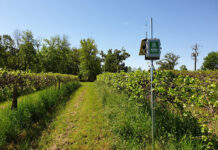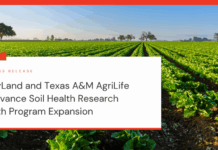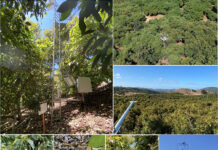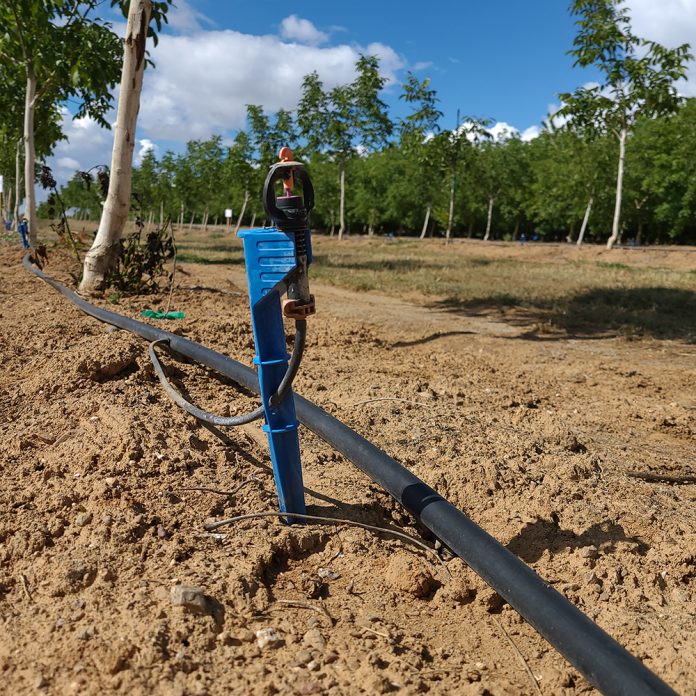
As agriculture faces increasing pressure to produce more food with less resources, the role of irrigation and nutrient management has become ever more critical. Efficient irrigation and nutrient management practices are essential not only for maximizing crop yield and quality, but also for promoting sustainability and minimizing environmental impacts. In this article, we will explore the interconnected role of irrigation and nutrient management in agriculture and how growers and advisors can implement strategies to improve their efficiency and effectiveness. By understanding the relationship between these two critical factors, we can promote sustainable agriculture while ensuring food security for generations to come.
Years ago, as I was interviewing many farm managers and their advisors to better understand their irrigation practices, I kept hearing one common statement: “The fastest way to compromise a great nutrition plan is to irrigate improperly.” Efficient irrigation management is crucial to minimize water losses, optimize nutrient use efficiency, improve soil health and increase grower profitability. Their goal is to manage irrigation by applying it at the proper time and rate for the specific crop demand and soil conditions. Excessive watering can cause waterlogging, nutrient leaching, soil erosion, disease and decreased crop yields. Conversely, insufficient watering can result in stunted growth and reduced harvest.
Agronomists have accepted and are committed to the 4Rs of Nutrient Management. While traditionally our 4Rs focus has been on the nutrients delivered with fertilizers, we can use the same paradigm to manage the equally essential, and in some crop systems more limiting, nutrients of hydrogen and oxygen delivered in the form of H2O.
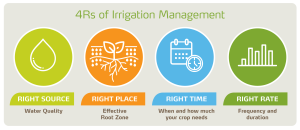
Right Source
Choosing the right source of water for irrigation is crucial. Water quality can vary significantly, and it is essential to consider factors such as salinity, alkalinity and potential contaminants. Testing the water source and ensuring it meets the required quality standards will help prevent adverse effects on soil health and plant growth. Growers and advisors should consider the following factors regarding water quality:
Salinity
High salt concentration can harm plants, reduce crop yield and quality, and affect soil health. Use electrical conductivity (EC) or total dissolved solids (TDS) meters to measure salinity and manage it through leaching, salt-tolerant crops or water treatment.
pH
Water acidity or alkalinity affects nutrient availability, uptake and soil health. Maintain a pH range of 6.0 to 7.5 through pH-adjusting chemicals or selecting pH-tolerant crops.
Nutrient content
Nitrogen, phosphorus, and potassium levels in water impact plant growth and nutrient management. Adjust fertilizer rates or choose crops suitable for specific nutrient levels.
Pathogens and contaminants
Water may contain harmful bacteria, viruses and heavy metals that affect plant and human health. Implement water treatment, testing and monitoring practices.
Water availability
Consider the source, quantity and timing of water for irrigation. Implement water management practices to ensure availability throughout the growing season.
Water quality is vital for agricultural irrigation. Though growers cannot control the quality of their water source, they can monitor and adjust it as needed. Consider all relevant factors to ensure suitable water for crop growth without posing risks to plants or human health.
Right Place
The “right place” in irrigation management involves effectively delivering water and nutrients to the plant’s effective root zone. Advancements in irrigation systems, such as drip, micro and pivot systems, have improved water distribution and incorporated fertigation (applying fertilizers through irrigation.) Fertigation increases nutrient efficiency, reduces waste and promotes soil health. Regular maintenance ensures high distribution uniformity, avoiding uneven irrigation. To evaluate distribution uniformity, contact your local Natural Resources Conservation Department or refer to this resource: ucanr.edu/sites/farmwaterquality/files/156399.pdf. Proper installation, maintenance and monitoring optimize the right place for uniform water and nutrient distribution, maximizing crop yield and sustainability.
Right Time
Knowing how much and when to turn on irrigation is crucial for maximizing water efficiency, promoting healthy plant growth, and optimizing crop yield. Consider the following factors:
Crop water needs
Understand the specific water requirements of each crop, considering different growth stages and their corresponding water demands. This knowledge helps determine when irrigation is necessary for optimal crop development.
Soil moisture monitoring
Regularly monitor soil moisture levels using sensors or visual inspection techniques. This information identifies when the soil has dried sufficiently to require irrigation, avoiding both overirrigation and underirrigation.
Weather conditions
Monitor weather forecasts and local climatic patterns. Factors like temperature, humidity, wind and solar radiation influence evapotranspiration rates, affecting water loss from the soil and plants. Adjust irrigation timing based on anticipated water loss.
Plant stress indicators
Observe signs of water stress, such as wilting, leaf rolling and changes in leaf color, to determine irrigation needs. Providing water at the right time prevents water stress, promotes optimal plant growth and minimizes crop yield losses.
Remote plant stress monitoring
Innovative technologies using sensors, aerial imagery or satellite data enable real-time monitoring of plant stress levels. Adjust irrigation timing based on these insights, improving water efficiency and crop performance.
Irrigation scheduling techniques
Utilize techniques like soil moisture-based scheduling, crop evapotranspiration (ET) data or plant water demand. These tools guide when to irrigate, considering crop needs and environmental conditions.
Water conservation considerations
In water-limited regions, time irrigation to maximize water use efficiency. Avoid peak water demand periods, applying water during cooler, less evaporative periods to minimize water loss and optimize utilization.
By considering these factors, growers can determine the appropriate timing for irrigation, ensuring crops receive adequate water when needed the most. This approach maximizes water efficiency, conserves resources and promotes healthy plant growth and optimal crop yield.
Right Rate
Once we know the amount of water the plant needs and when, we need to determine how frequently and how long to apply the water so that we do not have runoff or infiltration below the effective root zone. This might be an area for most improvement. By determining the appropriate rate, we can ensure that water and nutrients remain within the effective root zone, where plants can efficiently utilize them. This minimizes leaching and evaporation, reducing loss and waste.
To determine the right rate of irrigation:
- Understand soil characteristics, including type, infiltration rate and water holding capacity
- Determine the irrigation application rate specific to your system
- Consider the water demand of the crop
Several tools can aid in developing an effective irrigation schedule. These include evapotranspiration models, soil moisture monitoring and plant-based sensors that track water and nutrient uptake. By utilizing these approaches, farmers can align irrigation events with actual plant and soil water needs, maximizing water use efficiency.
As agriculture strives to meet the growing global food demand while conserving resources, the proper management of irrigation and nutrients has emerged as a critical aspect. This article has emphasized the importance of efficient irrigation and nutrient management practices for achieving optimal crop production, maintaining high-quality harvests and reducing environmental harm. By adopting the 4Rs of Irrigation Management that improve the efficiency and efficacy of these practices, growers and advisors can contribute to sustainable agriculture. Through a comprehensive understanding of the interplay between irrigation and nutrient management, we can pave the way for a future where agriculture meets the needs of the present while safeguarding the needs of future generations.





